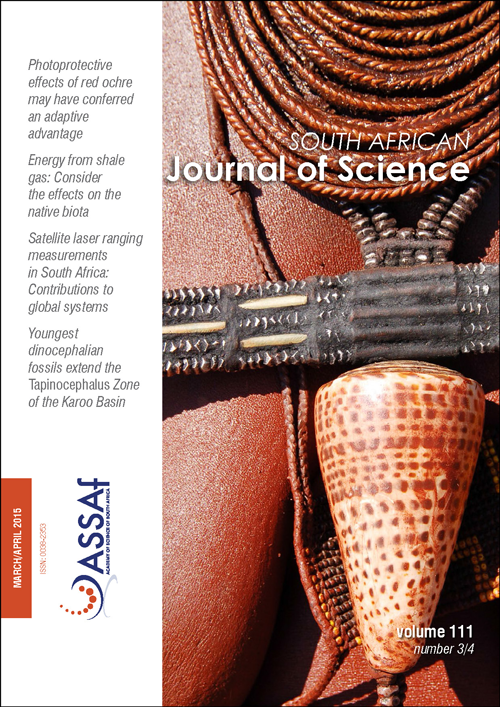Assessing the photoprotective effects of red ochre on human skin by in vitro laboratory experiments
DOI:
https://doi.org/10.17159/sajs.2015/20140202Keywords:
red ochre, Ovahimba; Middle Stone Age, UVR, sunscreen, in vitro SPF assessment, visible spectroscopyAbstract
Archaeological indicators of cognitive complexity become increasingly prevalent during the African Middle Stone Age, with the habitual exploitation of red ochre widely viewed as a key feature of the emergence of modern human behaviour. Given that some of the uses of ochre remain ambiguous, we present the preliminary results of an ongoing study in which we explore the efficacy of red ochre as a photoprotective device or sunscreen. The capacity of ochre to inhibit the susceptibility of humans to the detrimental effects of ultraviolet radiation was confirmed through the in vitro calculation of the sun protection factor values of samples derived from the Kunene Region in Namibia and the Bokkeveld Group deposits, Western Cape Province, South Africa. Visible spectroscopy was employed to determine colourimetric parameters of samples and assess the correlation between ochre colour and sun protection factor. The possible role of ochre as a sunscreen agent for hominin populations, including modern humans, during the Middle Stone Age in Africa is explored. We conclude that the habitual use of red ochre as a photoprotective agent likely played a role in the ability of prehistoric humans to adapt to novel environmental circumstances.
Published
Issue
Section
License

All articles are published under a Creative Commons Attribution 4.0 International Licence
Copyright is retained by the authors. Readers are welcome to reproduce, share and adapt the content without permission provided the source is attributed.
Disclaimer: The publisher and editors accept no responsibility for statements made by the authors
How to Cite
- Abstract 1222
- PDF 510
- EPUB 215
- XML 240













.png)